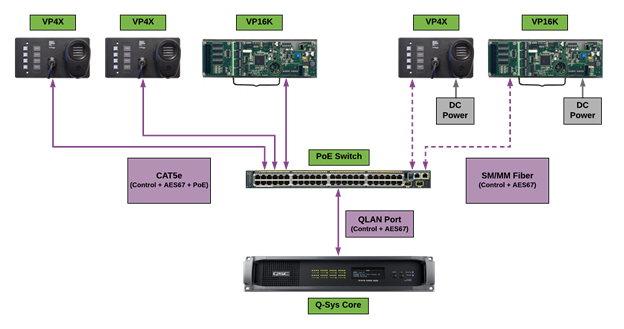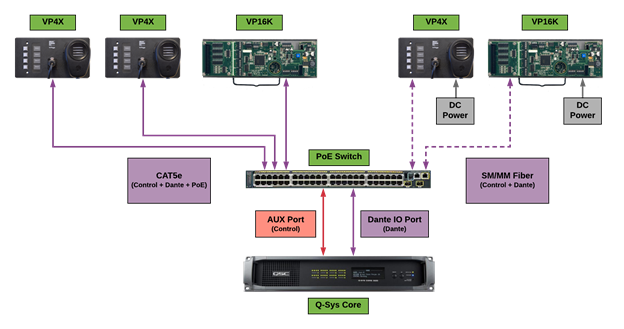Network Architecture
V-Page is part of a system consisting of a Q-SYS Core, network hardware, and the V-Pages themselves.
A single network connection handles both control and audio transport this connection can either be via CAT5e Ethernet cables or Single-Mode/Multi-Mode Fiber Ethernet cables if the length exceeds 300 ft.
When using CAT5e, power can be provided directly over the Ethernet connection via PoE. Since the SFP connection is not capable of providing power, a local DC power supply is required whenever you’re using this interface for a fiber-based Ethernet connection.
One important thing to understand is that each V-Page has two network interfaces that are switched into a single physical port; one for Control and the other for Network Audio (Dante or AES67). Also, Q-SYS cores handle AES67 and Dante very differently. AES67 can be utilized on the same network as Q-LAN, while Dante requires a dedicated Dante IO card to be installed within the Q-SYS core.
With all of these factors in mind, here are the network architectures we recommend depending on which audio network protocol you choose to use.
AES67 Network Architecture
The biggest advantage of using AES67 is that it co-exists peacefully with the native Q-LAN protocol used by Q-SYS DSP cores. This means that you can interface to both the audio and control interfaces of the V-Page stations simply by connecting one of the Q-Lan ports to the V-Page network.

Dante Network Architecure
This is the recommended method where Dante Audio and Control are using the same network switch. Q-LAN and Dante require a different QoS configuration while the AUX Network of the Q-SYS core acts as a generic ethernet port. This makes the AUX connector the ideal path to interface to the Control interface of the V-Page stations. Dante traffic must be routed to a separate network connection on the Dante IO card within the Q-SYS core.
